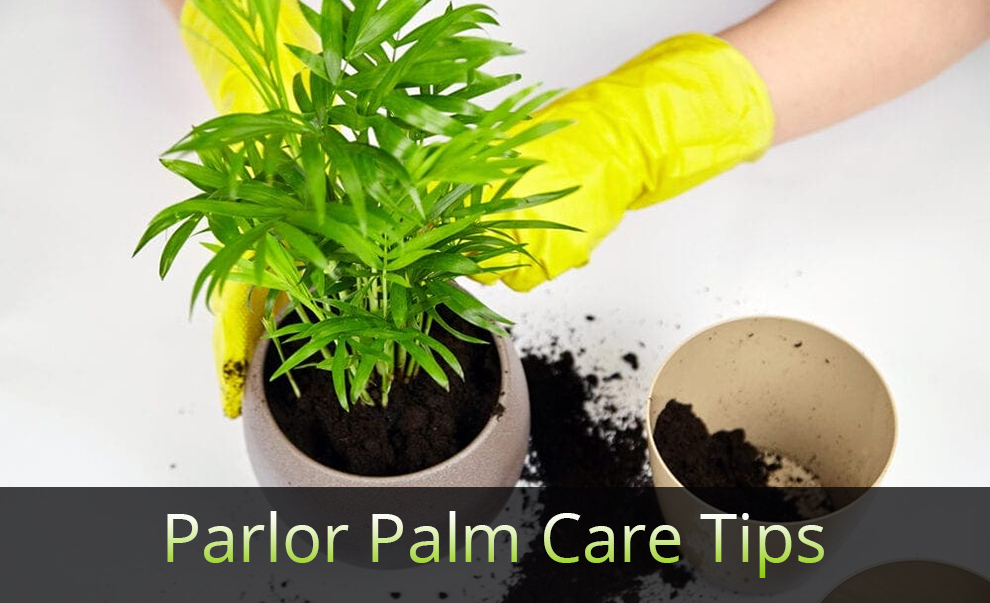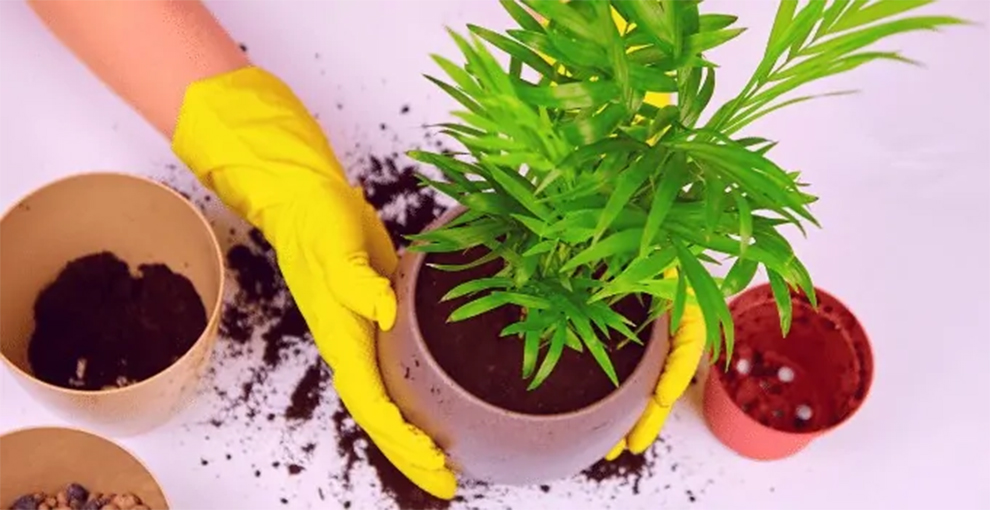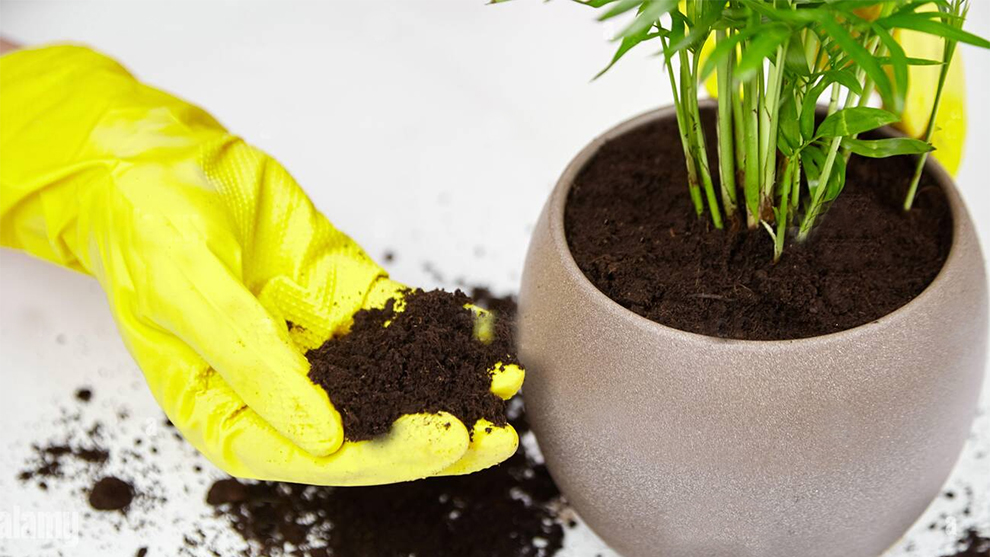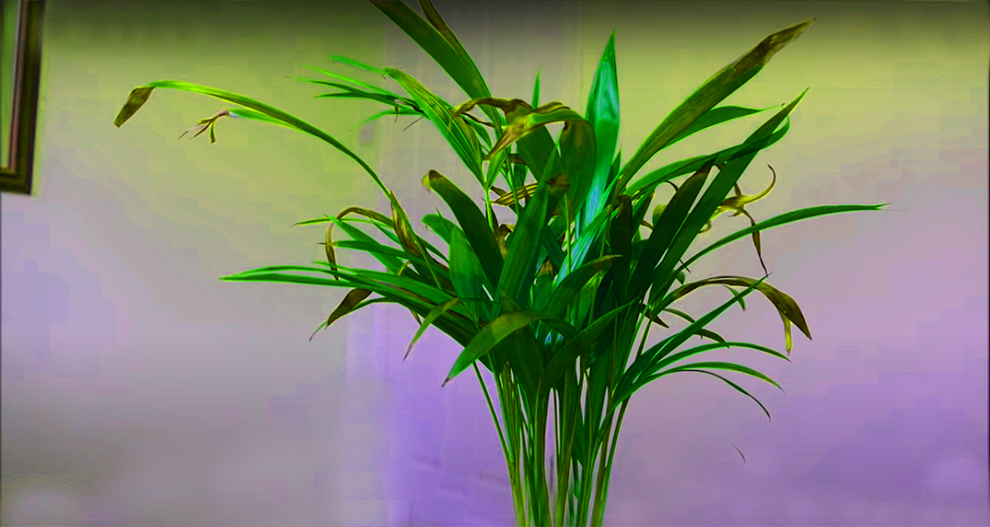How To Care For Parlor Palm (Sun, Water, Soil & So Much More)

If one can think of the quintessential indoor plant, it is the parlor palm. The parlor palm is a beautiful tropical palm. Several palms fail to grow well in the interiors. Surprisingly, it has never been challenging to bring parlor plants indoors.
Botanically known as Chamaedorea Elegans, the Parlor Palm is hardy and low-maintenance.
Native to tropical and sub-tropical regions in America, the plant was initially discovered in Central America and then introduced to the United States. Since then, there has been no looking back in America.
Jump To
- Detailed Guide and Parlor Palm Care Tips
- Parlor Palm Problems & Their Solutions
- Frequently Asked Questions
- Conclusion
Today, it has earned the status of one of the most attractive houseplants. Also known as Neanthe Bella Parlor Palm, it is an excellent air purifier. Many even confuse the Parlor Palm with Bamboo Palm because of its beautiful bamboo-like stems, which grow like bamboo.
The palm grows with light-textured foliage that beautifully envelope its thin trunks. Even though it is easy to care for, the knowledge of parlor palm care tips is mandatory. So, how to care for parlor palms? Through this guide below, we will discuss some important topics like:
- How much water does a parlor palm need?
- Sunlight requirements
- How to repot a parlor palm?
- How to prune parlor palm?
- And an overall guide on how to care for Chamaedorea Elegans?
Maintenance Guide – How To Care For Neanthe Bella Palm?

Below, we will discuss the necessary care instructions to help you ensure the longevity of the parlor palm plant.
How Often To Water Parlor Palm?
Knowledge of the watering requirements is one of the most vital aspects of the parlor palm care tips. Even though the parlor palms are forgiving and drought-tolerant, they will never forgive overwatering.
So, it may be forgivable to underwater them, but overwatering or sitting in a saturated potting mix, can cause root rotting and even kill the palm.
The idea is to ensure that the moisture content in the soil is at an even level. So, if you do not know how to take care of a parlor palm’s watering needs, let it be on the lower side than going on the higher level.
Typically, spring to summer is the growing season, wherein the water requirements are the maximum. During this time, you can water once every seven days.
But, there are a slight change in the care pattern during the winters. In the winters, the plant must be watered only once in two or three weeks. If the fronds appear yellowish or brown, you must increase the water frequency.
Also, how often to water parlor palm also depends on the soil assessment. You can tap and touch the soil. If the top one-inch layer feels dry, you know it is time for the next watering session.
Now, let us move ahead and discuss the other parlor palm care tips.
Ideal Temperature For Parlor Palm Growth
How to care for Neanthe Bella palm in different temperature settings? To ensure good care for the Parlor Palms, you must try to mimic the temperature in its native area, indoors.
As you know, the Parlor Palms typically thrive in places that receive warm winters. Hence, you need to ensure that across the year, the average temperature is between 65°F-75°F. It can be as hot as 85°F.
When it comes to temperature, you now know the trick. Just remember a simple rule of thumb – If you feel warm and cozy inside, so will your Parlor Palm.
As for the winters, in the outdoors, the parlor can tolerate the temperatures dropping to 50 degrees Fahrenheit. However, if the cold weather persists or the temperature drops further, it may frost, and frosting can kill the palm.
Hence, during winters, bring the parlor palm indoors. Please keep it away from the door, vents, and windows from where the cold wave leaks inside.
Related: Indoor Water Plant Choices
What Kind Of Soil Do Parlor Palms Like?
To ensure a healthy growth of parlor palms you should know how to take care of a parlor palm’s soil requirements. In the outdoors, any well-draining soil will suffice. A soil that retains too much water can cause root rot and expose the plant to fungal diseases. Clay, sand, or loamy soil works well for parlor palms.
If you are planting the palm indoors, you need to use a peaty soil-based top-notch potting mix. However, please ensure that the potting mix does not break down or become spongy.
Further, the soil’s pH should be slightly acidic or neutral. Salty soil is the worst selection. It is one of the most vital parlor palm care tips and should be borne in mind.
How Much Light Does A Parlor Palm Need?
How to care for Chamaedorea Elegans that it receives adequate sunlight? Scientifically, the parlor palms are low-light plants. However, low-light does not imply no-light. Ideally, the plant will thrive in medium-bright indirect sunlight.
You can plant them in a northern exposure. Intense, bright, and direct sun can burn the foliage and be dangerous for the plant. If you do not have a window indoors for the plant, you can also shed artificial lighting.
What Should Be The Pot Size, When Parlor Palms Are Not Being Planted In The Ground?
Picking the correct container is one of the most vital aspects of the parlor palm care tips. The pot with a diameter of 4” to 14” is ideally suited for the parlor palm. You can pick any material pot.
However, ensure that it has holes in the bottom to support good drainage. Terra cotta pots are porous and help in quick drying of the soil. These are better suited than plastic pots. suited than plastic pots.
How To Care For Parlor Palms Fertilizer Needs?

The parlor palms are light feeders. You can use a diluted liquid fertilizer and feed the plant only once or twice during the growing season. There is no need for fertilizer during the winters.
Humidity
In the native regions, the Parlor Palm receives high humidity. So, if you wish to know how to care for Chamaedorea Elegans aka Parlor Palm, you have to try to mimic the similar humidity inside the home.
In low humidity, the palm’s tips can become brown. So, if the humidity in the air is low, you can use a humidifier to ensure that the plant does not dry out.
Parlor Palm: Repot Or Not?
When people ask us how to repot a parlor palm, our first question is – ‘Is it needed?’ So, if you wish to learn how to care for Neanthe Bella palm, please know that repotting must be done only when needed.
The plant has a slow-growing and weak root system. Thus, be careful with repotting. If not, you may end up doing permanent damage to the plant. Given the growth rate and the size, ideally, repotting would be required once in two years and should be done solely when the roots have completed filling the present pot.
How To Prune Parlor Palm?
Pruning is an essential aspect of parlor palm care, but the plant’s pruning requirements are pretty minimal. These are self-cleaning trees.
So, when the fronds dry or turn brown, they self detach and fall from the plant. But, when you see the tips getting discolored, you must know how to take care of a parlor palm i.e. by pruning them, as they can restrict the growth or cause unnecessary problems to the plant.
When pruning, ensure that the blades are clean. It is necessary to prevent feeding the pests or the diseases of one plant to the other. You can wipe off the blade with rubbing alcohol before you begin pruning.
Parlor Palm Propagation
Knowledge of propagation is another vital aspect of the parlor palm care tips. Mostly the parlor palms are propagated and grown from the seeds, but it is a time-consuming, risky task with low success rates. Also, the germination time is variable (1-6 months), depending on the growing season.
Further, cross-pollination is also a mandatory requirement for the harvest. Another prevalent way of propagating parlor palm is division but that too requires practice and knowledge.
So, these are all the helpful tips we have. Hopefully, this guide has enlightened you on how to care for Chamaedorea Elegans.
How To Care for Parlor Palm Problems?

Above, we have presented a detailed parlor palm care guide. But, mistakes happen, and the plant suffers. Multiple problems can occur, but most issues have a solution. Below, we will discuss some common parlor palm problem and their solutions.
Cankers
Unfortunately, the parlor palms are susceptible to several pathogen and pest-related concerns. The fungal and bacterial pathogens infect the plants, resulting in stem cankers. It might also happen by frost and spread through plant shears, wind, air, and animals.
Typically, cankers are a sign of excessive moisture issues and overwatering. Hence, it is best to prune the affected portion and adjust the watering frequency of the plant.
Insect Damage
Insects, such as spider mites, mealybugs, and others, stunt the plant’s growth. To overcome this issue, you can use neem oil. Alternatively, rub the leaves with dabbing alcohol. Using insecticidal soap can also help.
Are Parlor Palm Brown Tips A Cause For Concern?
Yes, the browning of the tips is a sign of dryness in the plant. It may be because you do not water the plant enough or keep the parlor palm in direct sunlight.
Hence, to ensure that the foliage looks blooming green again, you must water your palm adequately. Also, take it to a place where it gets indirect sunlight. Before that, do clip off the brown tips as they are not going back to green again.
Dry, Dead, Or Spotted Leaves
If you see black spots or dry dead leaves, it is because of excessive sun exposure. Hence, you must immediately move the plant to a shady area. To prevent the plant from dying, you need to clip off the spotted leaves and provide the plant with the necessary nutrients to ensure fresh foliage.
Parlor Palm Care Tips To Fight Root Rot
Overwatering the parlor palm can result in root rotting. So, avoid watering the palm for a while and let the roots dry out. You can also repot the plant in a fresh pot.
Why Is My Parlour Palm Pale Green?
Pale green or light-yellow leaves indicate excessive sun exposure or infrequent watering. If underwatering is the concern, you will also see the leaves dropping, but if the leaves are not droopy, then excessive or direct sun exposure is the concern. You can take remedial action according to the cause.
Why Is My Parlour Palm Yellow?
One of the prevalent causes of yellowing leaves is overwatering. Of course, the parlor palm enjoys humidity, but soggy soil or waterlogged roots will do it no good. Hence, pick a pot and select soil with good drainage.
Get rid of the sitting water, clip the yellow leaves with sharp scissors, and monitor your watering frequency.
Related Care Guides: Areca palm, Date palm, Ponytail palm, Majesty palm
How To Care For Parlor Palms: FAQs
Ques 1. Is parlor palm easy to care for?
Ans. Yes, Parlor Palms are pretty easy to care for. They are low-maintenance plants and are great picks for amateur gardeners.
Ques 2. Can I put my Parlor Palm outside and indoors both?
Ans. Yes, provided you can expose the plant to the right growing conditions, you can place your parlor plant indoors and outside.
Ques 3. Do Parlour palms need drainage?
Ans. Yes, parlor palms need drainage. To ensure proper growth and maintenance, you must plant them in well-draining soil with a good potting mix.
Ques 4. Does a Neanthe Bella Palms produce seeds?
Ans. Generally, the indoor Neanthe Bella Parlor Palm does not bloom and produce fruits. But, if you place the plant in a suitable environment, it will bloom with yellow flowers. The flowers later grow into black fruits, each containing a seed.
Ques 5. Do parlor palms like to be misted?
Ans. Parlor palms love humidity. So, it does not hurt to mist the palms at least three to four times a week. You can increase the frequency if the moisture in the air is low.
Ques 6. Why are my Chamaedorea Elegans dying?
Ans. Underwatering and overwatering are the two most common reasons for the Parlor palm’s death.
Ques 7. Is Chamaedorea Elegans poisonous to cats or dogs?
Ans. No, parlor palms are non-toxic and pet-safe.
Ques 8. How do you care for a Parlour Palm indoors? What’s different from outdoor care?
Ans. Caring for the parlor palms indoors is not tricky. If you can mimic the conditions in its native environment, the plant can thrive anywhere. The primary difference between indoor and outdoor care is in the soil and sunlight.
In the outdoors, any soil works well. But, in the indoor plantation, you need to add a good potting mix to the soil for the plant to thrive and provide the needed sunlight.
You might also like: Palm tree lifespan, Types of fan palms
Conclusion
So, this is our detailed guide on how to care for parlor palms. We have tried to include every vital detail necessary in this guide above. So, if you follow them to the T, your parlor palms will thrive.
